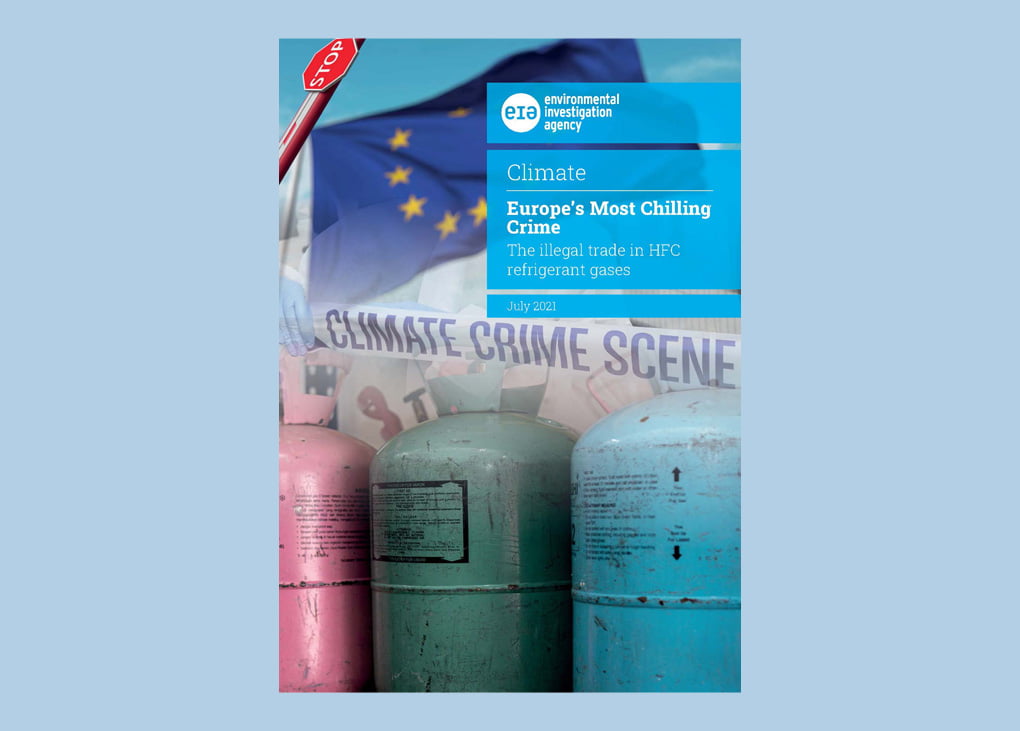A new report from the Environmental Investigation Agency (EIA) has exposed the alarming extent to which HFC refrigerants are illegally bought and sold in Europe. It suggests that the illegal trade represents as much as 30 per cent of the legal trade – or as much as 30 million tonnes of CO2e.
Titled Europe’s Most Chilling Crime, the report offers an update on the illegal HFC trade situation in Europe, first exposed by the EIA in its 2019 Doors Wide Open report. It summarises information gathered from undercover field and remote investigations, surveys of industry and government stakeholders as well as detailed trade and seizure data analysis.
The undercover investigation involved finding sellers of suspected illegal refrigerant online, then arranging purchases and actually meeting contacts from the companies in person to negotiate and confirm their methods for getting non-quota HFCs across borders. During this work, EIA investigators were offered 17.5 tonnes of suspected non-quota HFCs.
The EIA identified Romania as a key entry point for illegal HFCs into EU markets, with Chinese-made HFCs entering from Turkey and Ukraine. It also uncovered a complex network of intermediaries involved in illegal trade and commonplace use of bribery to bring HFCs across borders.
The fieldwork was supported by analysis of trade data, which showed large discrepancies between European customs and the HFC registry. Loopholes in transit processes and a proliferation of companies importing HFCs – often in relatively small quantities – has made it possible for large quantities of refrigerant to be traded illegally.
An industry survey conducted by the EIA as part of the project indicated that R134a and R404A are the refrigerants most connected to illegal trade. Respondents also mentioned R22, R410A and R507. The report notes that the increasing amounts of R404A being traded illegally suggest compliance challenges associated with Europe’s service ban. Dating from 2020, the ban expressly prohibits the use of HFCs that have a GWP of 2,500 or more to service refrigeration equipment with a charge of more than 40 tonnes of CO2e.
The report comes as Europe reaches another “step” in its HFC phase-down schedule. More broadly, Europe is reviewing its F-Gas Regulation in light of the European Green Deal and recently revised 2030 emissions reduction target of at least 55 per cent.
“There is an urgent need to strengthen the current monitoring and enforcement system and upscale enforcement capacity in Member States to put an end to the illegal trade in HFCs,” says the report.
“As the rest of the world begins to phase down HFCs under the Kigali Amendment, the review of the F-Gas Regulation is a timely opportunity to create a ‘gold standard’ HFC monitoring, reporting and verification system. Demand-reduction measures, such as further ambitious sectoral bans on the use of HFCs in new equipment, will also support efforts to combat illegal trade.”
The EIA is also looking to reach a wider non-industry audience with this report, acknowledging the importance of the Kigali Amendment and the HFC phase-down in achieving global climate goals.
“It’s no exaggeration to say the future stability of human society sits on a knife-edge and time is running out to meaningfully tackle climate change,” says EIA Climate Campaigns Leader Clare Perry.
“We can’t afford a single misstep in our efforts to keep the global temperature rise below 1.5°C. And the sheer scale of illegal HFC trade into the EU should be ringing alarm bells throughout the bloc – this is the biggest eco-crime no-one’s heard of and that needs to change, fast.”
To read the report, click here.
 Mark Vender
Mark Vender


Leave a Reply